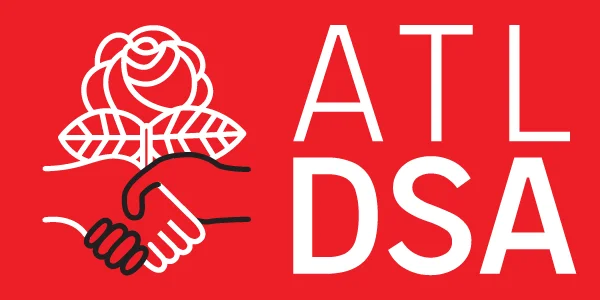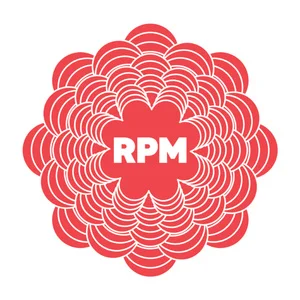

June 10, 2023 Run-Off Voter Guide
There are zero San Antonio DSA endorsed candidates on this guide.
Candidates and propositions must seek the endorsement of SADSA and our general membership votes on the decision to endorse. Several community members have reached out to SADSA for a voter guide, so we have created one. We hope this can help inform your decisions if you’re looking to a socialist organization for electoral advice.
Our struggles go beyond the ballot box, but it is a site of struggle that we cannot withdraw from, we can take it back if we fight together. Join San Antonio DSA.
If you have any questions or comments, please don’t email SanAntonioDSA@gmail.com.
In Texas, a candidate must get more than 50% of a vote in a general election to win. If nobody reaches that threshold, the two biggest vote getters go to a runoff election. If you did not vote in the general you CAN vote in the runoff election. In Bexar County you can vote at any voting location. You can go to the Bexar County Elections Department website to find voting locations, hours, your individual sample ballot, and more.
City Council Landscape Post May 6th Election
The results of the May 6 election were largely predictable. Every incumbent won their seat outright (except Mario Bravo) and Mark Whyte won in District 10. The most exciting part of the night was watching our DSA endorsed candidates cross that finish line and get the win. This once again proves that prioritizing the working class is popular with working class communities. Not only did Jalen walk away with 56.04% of the vote—even though he had 9 opponents—he is also the first councilmember in District 2 elected to a second term in a decade. Teri walked away with 62.89% of the vote, after going against the same guy who ran against her in 2021. (He must have not gotten the memo that she’s the people's champ.) Another bright spot was Stephanie Torres’ win for SAISD School Board in District 5. Torres, a SAISD parent, won with 57.21% of the vote by running a grassroots campaign centered on student issues. We know she’ll be an ally to our education union comrades. You can find the rest of the election results here.
Since our May 6 voter guide the state of local control in Texas has gotten bleak. With Governor Abbott’s certain signature, HB 2127 will become law. We wish we could give you a list of everything it would affect and which local ordinances it would overturn, but the bill language is so broad that it is hard to say. There will surely be lawsuits and the bill will make its way through the courts. In the meantime, we must continue to build power where it is strategic. We sincerely hope that you'll commit to joining an organization (hopefully DSA dsausa.org/join) and start organizing. Organize where you work, organize where you live, and let's organize for a better San Antonio.


Atlanta DSA condemns charges against Atlanta Solidarity Fund organizers and calls for Democratic Referendum on Cop City
Yesterday, three organizers with the Atlanta Solidarity Fund were arrested by the Georgia Bureau of Investigation on charges of “money laundering” and “charity fraud” in an apparent effort to develop a RICO-like case against the Stop Cop City protest movement. These charges against civil rights organizers represent yet another scare tactic and unwarranted escalation by the same elite forces conspiring to build Cop City. We call for the immediate release of the arrested organizers with all charges dropped.
The Atlanta Solidarity Fund has for years provided bail and legal support for peaceful protestors — it is not a criminal organization. We stand in solidarity with the defendants against the corrupt politicians, police foundation, billionaires, and corporations pushing to undemocratically destroy public forests and build Cop City. It’s notable that the same Georgia prosecutors who routinely ignore blatant corruption at City Hall and the State Capitol are instead taking aim at working-class Atlantans fighting to preserve public land through peaceful protest. These arrests are acts of political repression by a right-wing, minoritarian regime which rules society to serve a handful of wealthy elites.
Since 2021, thousands of Atlanta residents have peacefully campaigned to oppose Cop City by legal and democratic means. All violent conflict over Cop City has been instigated by Mayor Andre Dickens, Brian Kemp’s State police, and the major corporations behind the Atlanta Police Foundation. Mayor Dickens and the Atlanta City Council have repeatedly and brazenly ignored the concerns of local residents and voters in authorizing the destruction of public Atlanta forest land and the violent eviction raid on peaceful protestors — all culminating in GBI’s violent murder of an environmental protester.
No amount of police repression can silence the voices of working-class Atlantans who are united in our resolve to stop Cop City. The crisis over this development has been ongoing for two years, and the popular resistance against Cop City will continue until Atlanta residents are able to decide on this issue in a free and fair election. We call on the Atlanta City Council to vote NO and reject the allocation of construction funds for Cop City. Instead, the council should order a democratic referendum to let the people of Atlanta decide whether the construction should proceed in the upcoming general election already scheduled for November 7, 2023.
Statement from the Atlanta DSA Steering Committee


Jersey City Times: Right-To-Counsel Moves Forward
“The Jersey City City Council Wednesday night took the first step to establishing a “Right to Counsel” for the city’s tenants who comprise about 70 percent of the population and who, advocates say, face increasing prospects of evictions by landlords’ hiking rents to unprecedented numbers.”
Read “Right-To-Counsel Moves Forward, Smoke Shops to be Licensed” in Jersey City Times


HCV: Jersey City Council passes amended right to counsel ordinances on first reading
“Jersey City is facing an eviction crisis. Rents are rising faster than incomes. Tenants deserve to know their rights and defend them. Developers have poured money into Jersey City. But not enough new units are affordable. More and more residents are being displaced. It’s time for developers to give back to the city…”


WFMU: Right to Counsel Interview #2
Right to Counsel JC Co-Chair Jake E. returned to DJ Trouble’s “This Is the Modern World” on WFMU!
Jake E, organizer for the Right to Counsel Campaign makes a second appearance on Jersey City’s very own WFMU to discuss the Right to Counsel campaign’s push ahead of the final vote on June 14th and tenants’ rights in Jersey City.
You can listen to the full interview here. Jake’s interview starts at 1:24:11 in the episode!


Winning Green Power for the People
Tonight we are going to talk about winning. Earlier this month the Build Public Renewables Act passed through the New York State budget - a monumental victory for the Public Power NY Coalition that has been organizing for four years to pass the bill.
No outlet has covered the fight for Public Power in New York more than Revolutions Per Minute. Since day one in 2019, we’ve had lead organizers of the campaign on the show to speak about why we need Public Power and how we were going to win it.
Tonight on this special Best of BAI fund drive show - we’ll revisit some of those interviews and hear from the organizers who won socialist climate legislation here in New York. We’ll also hear past interviews with Assemblymembers Zohran Mamdani and Sarahana Shrestha
If you’ve been listening along with us since day one, go to WBAI.org right now and make a donation to keep us on the air.
You can follow the Public Power NY Coalition on twitter @PublicPowerNY
To learn more about how the Public Power NY Coalition won the Build Public Renewables Act watch BPRA: A Win in the Fight for a Green New Deal


Capitalocene Q&A (with Joerg Rieger)


NJ.com: City council ready to introduce Jersey City’s right-to-counsel program legislation after some tweaks
By Mark Koosau
The creation of Jersey City’s right-to-counsel program for tenants and a fee on new developments to fund it has hit a snag as the city council plans to reintroduce the legislation with some changes.
Two related ordinances will be up for re-introduction Wednesday night, but the original purpose remains unchanged: a program to provide free legal representation for tenants facing evictions, and a 1.5-2.5% fee on new developments that would fund its $4 million budget.
“We are doing a better job of making sure the ordinance serves everybody,” said Councilman James Solomon, the sponsor of the legislation, in regard to the changes.
“Ultimately the end goal is keeping tenants in their homes… Read on at NJ.com


The Indypendent: The Long Struggle for Affordable Housing in New Jersey Dates Back to the Civil Rights Movement
“Just as Mount Laurel residents fought back 50 years ago, tenants in Jersey City are currently organizing against rising rents and evictions. The two right to counsel ordinances they are fighting for will give all tenants in Jersey City the right to free legal representation, create a right to counsel office in City Hall and introduce fees on developers to create an affordable housing fund. Part of that fund will be used to cover the costs of tenants’ legal services.”


HCV: Jersey City RTC advocates march to City Hall as council gets ready for vote
“Workers and tenants are fighting back in their unions in their tenancies with their neighbors and at City Hall. We’re not paying for right to counsel through taxpayers. We’re going to tax the rich. We’re funding right to counsel with a fee on development…Including the biggest developer in Jersey City, the LeFrak organization. LeFrak is the chief architect of Newport and the displacement of thousands of Jersey City residents that lived right here.”